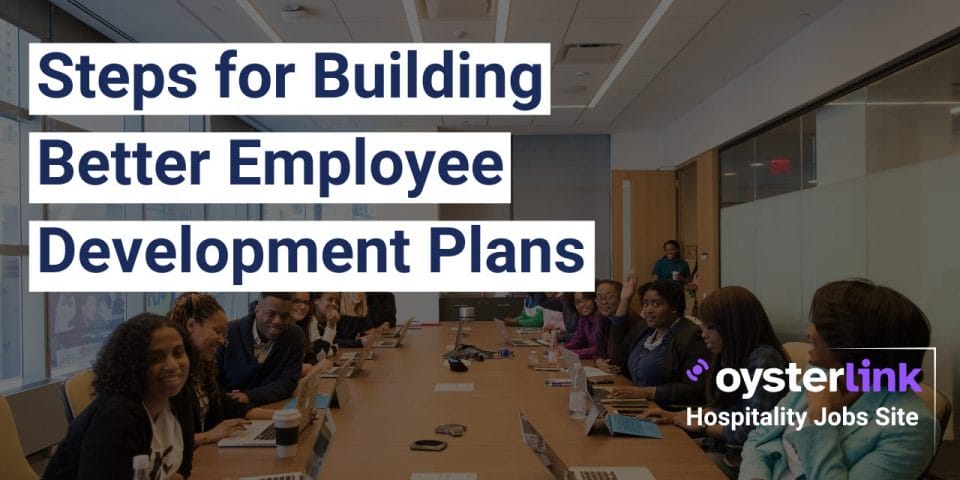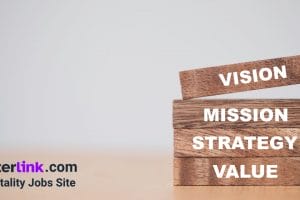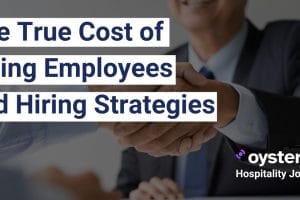A staggering 76 % of employees say they’re more likely to stay at a company that invests in their career growth. Yet two-thirds still look elsewhere for advancement opportunities.
Meanwhile, replacing a single knowledge worker costs six to nine months of their salary.
Development plans aren’t perks — they’re retention insurance. Organizations that prioritize them see up to 18 % higher productivity and 23 % greater profitability.
This guide expands on four essential steps to build strategic development plans that drive business results while helping employees grow and align with long-term goals.
Step 1: Identify Growth Opportunities
The first step in creating a meaningful employee development plan is identifying the right opportunities for growth.
This means assessing each team member’s strengths, skill gaps and aspirations with data — not assumptions.
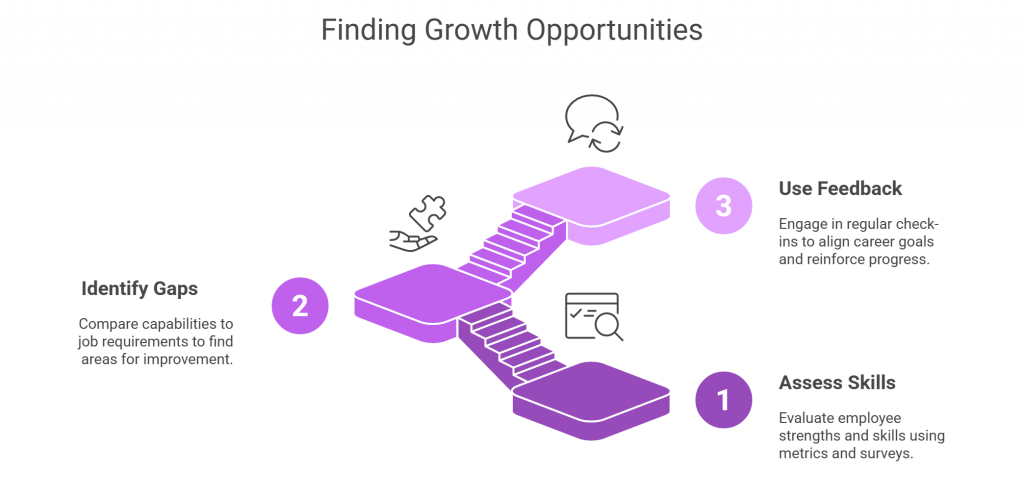
Assess employee skills and strengths
Use structured methods like performance metrics, surveys and self-assessments to understand each employee’s baseline.
This insight helps guide them toward roles that match their potential.
Spot skill gaps
Compare current capabilities to job requirements, industry benchmarks and future business goals.
Use evaluations, exit interviews and safety records to uncover skills most in need of improvement.
Use feedback to guide development
Consistent, timely feedback drives engagement.
Schedule regular two-way check-ins to align on career aspirations, adjust development paths and reinforce progress.
Step 2: Set Clear Development Goals
With opportunities identified, the next step is turning them into clear, measurable goals.
Organizations that focus on goal-setting see productivity jumps when leaders actively support the process.
Create SMART goals
Ensure each goal is Specific, Measurable, Achievable, Relevant and Time-bound.
Example:
“Complete conflict-resolution training and lead a mediation by Q3”—not just “Improve communication.”
Balance short-term and long-term goals
- Short-term goals focus on current responsibilities.
- Long-term goals build future capabilities.
Together, they keep employees motivated while future-proofing your workforce.
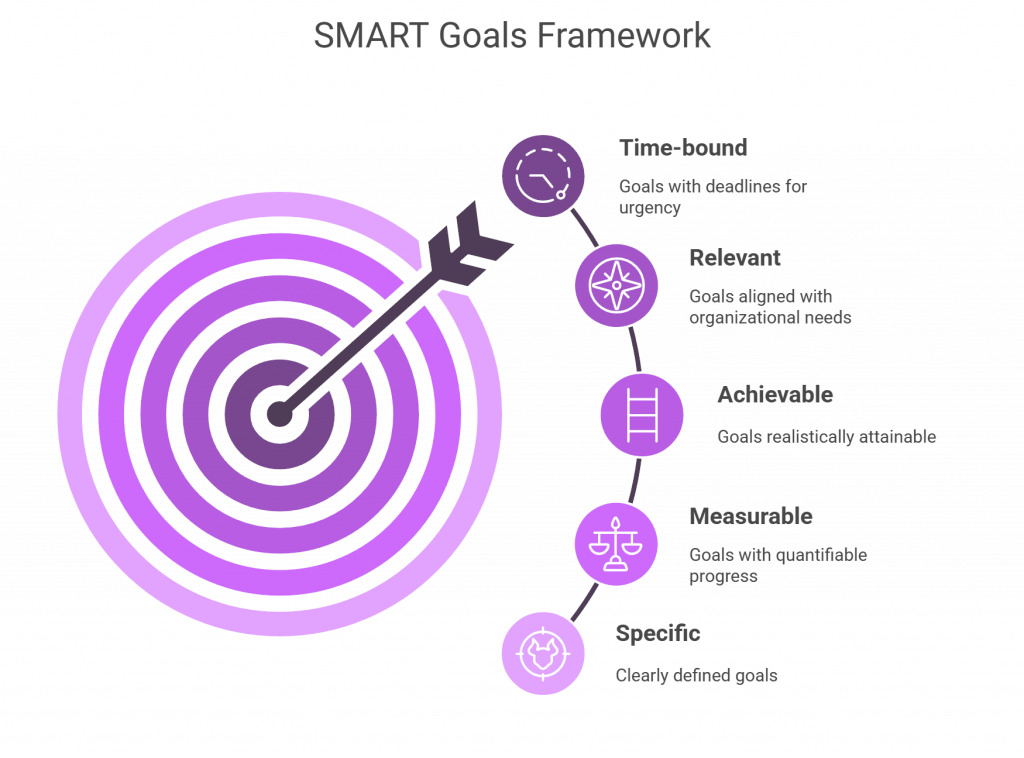
Examples of SMART Goals
- “Increase presentation confidence score from 6/10 to 8/10 by year-end.”
- “Earn Lean Six Sigma Green Belt in six months.”
- “Shadow IT for four hours a week and lead one collaborative pilot project.”
Five Types of Development Plans (Pick & Mix)
- Role-based upskilling: Closes immediate skill gaps (e.g., new CRM features).
- Leadership acceleration: Prepares high-potentials for people management within 12–18 months.
- Succession mapping: Documents flight-risk roles and builds bench strength two levels deep.
- Performance improvement: Supports under-performers with targeted coaching, avoiding knee-jerk exits.
- Future-skills incubator: Experiments with emerging tech (AI, data literacy) to future-proof the organization.
Mapping each SMART goal to a specific plan type keeps expectations crystal clear for managers and HR business partners.
Step 3: Create an Action Plan
Turning goals into results requires a strategic action plan that includes the right activities, timing and support.
Choose development activities that fit
Options include:
- Workshops
- Certifications
- Mentorship
- Online courses
- Cross-functional projects
- Job shadowing
Match them to learning styles and development needs.
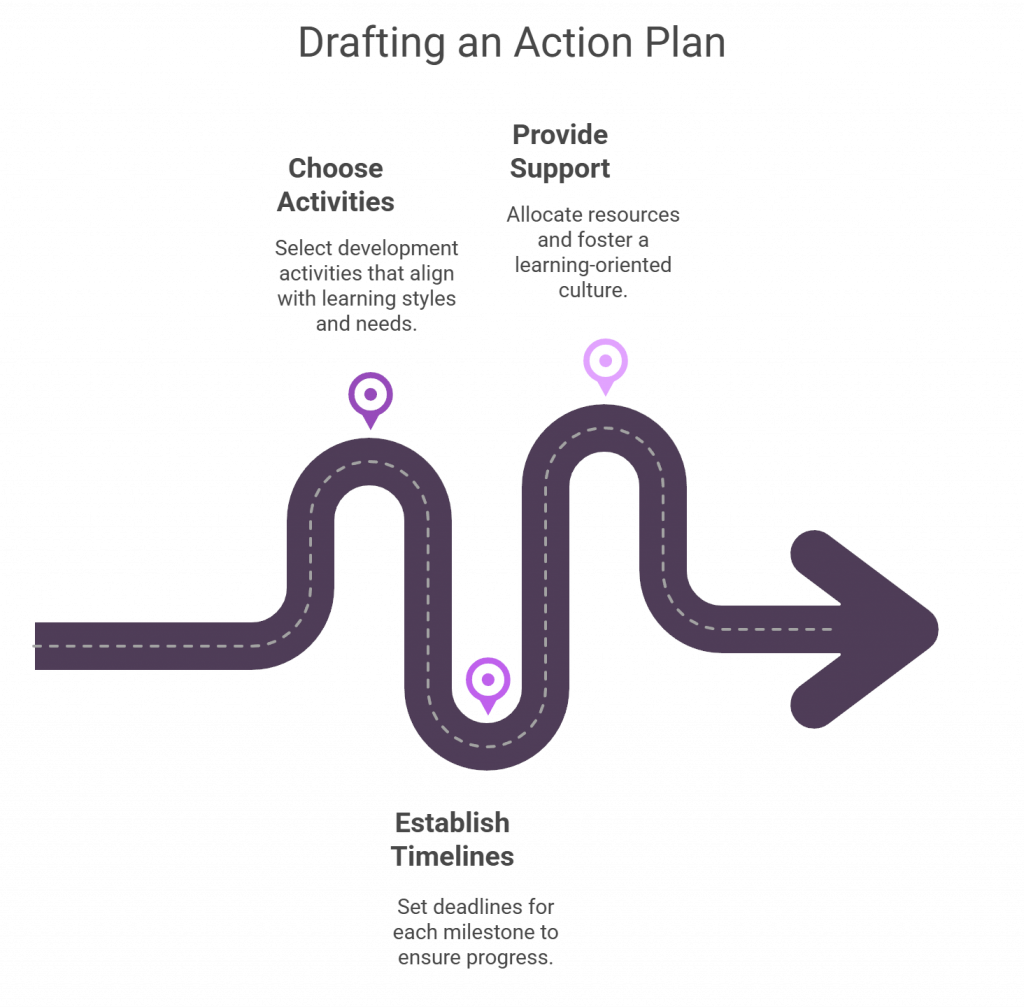
Establish timelines and milestones
Break large goals into milestones.
Assign deadlines to each step and build in protected development time, such as learning hours or monthly training days.
Provide resources and support
Budget for learning, offer stipends or tuition reimbursement and build a culture where mistakes are viewed as learning opportunities.
Managers should actively support and reinforce learning.
Step 4: Track Progress and Adjust
Development plans must evolve as employees grow and business priorities shift.
Regular tracking ensures plans stay relevant and impactful.
Hold consistent check-ins
Combine informal weekly chats with structured monthly or quarterly reviews.
Use these to track KPIs, celebrate wins, and course-correct when needed.
Measure success with key metrics
Track both quantitative (e.g., training-completion rates, internal mobility) and qualitative indicators (e.g., peer feedback, manager evaluations).
Link individual progress to team performance and retention trends.

Stay flexible and make adjustments
Adapt plans as business goals or employee needs change.
Keep documentation clear and shared so everyone is aligned on expectations and responsibilities.
Implementing Employee Development Plans
Execution is where great plans often fail.
The most successful programs involve committed leadership, daily integration and practical support.
Train managers to support growth
Managers should understand each employee’s goals and provide pre- and post-learning support.
Equip them with checklists, toolkits and goal-tracking frameworks.
Embed development in daily work
Use micro-learning and embed learning in workflows.
Encourage on-the-job application of new skills and create safe spaces to practice and fail.
Tech and budget toolkit
| Need | Low-cost Tool | Enterprise Option |
| Skills-gap analytics | Google Sheets + Pivot tables | Degreed or LinkedIn Learning Hub |
| Goal tracking | Trello board template | 15Five or Lattice |
| Micro-learning | YouTube private playlists | Axonify or Udemy Business |
| Budgeting | 1 % of payroll (SHRM benchmark) | 1.5–2 % for high-growth firms |
Budget rule of thumb: allocate US$1,300 per full-time employee annually — the 2023 global average.
Anticipate and overcome challenges
Align goals with business priorities.
Address time constraints with flexible learning formats. Improve communication with shared documents and regular check-ins.
Remote & Hybrid: Making Development Work Anywhere
With 67.9% of the global population using internet and over half of U.S. employees working hybrid schedules, digital-first development is now table stakes.
Best practices
- Blend formats: Combine synchronous virtual workshops with asynchronous micro-learning and discussion boards.
- Time-zone fairness: Rotate live sessions so no region is perpetually outside business hours.
- Camera-on practice rooms: Create safe spaces for role-plays and feedback.
- Digital badges: Issue blockchain-verified credentials to recognize progress.
Measuring the Impact of Development
Quantifying the business impact of your development program ensures continued buy-in from leadership and maximizes ROI.
Track KPIs that matter
Measure:
- Promotion rates
- Retention
- Productivity gains
- Onboarding-time reduction
- Engagement
Pair with employee-satisfaction data to understand the full picture.
Calculate ROI
Use a simple formula:
- (Benefit − Cost) ÷ Cost × 100.
Include hard metrics like performance increases and soft benefits like improved morale or collaboration.
Use feedback for continuous improvement
Gather feedback before, during and after training.
Look beyond completion rates to understand how development translates into job performance.
Common pitfalls & how to avoid Them
| Pitfall | Why it happens | Quick Fix |
| Copy-paste plans | HR uses generic templates without customization | Add a “personal purpose” section to every plan |
| Set-and-forget goals | No follow-up cadence | Automate monthly reminders via your HRIS |
| Training without application | Skills fade within 30 days | Pair each course with a real project deliverable |
| Manager bottlenecks | Managers lack coaching skills | Provide a 2-hour “Coach in the Flow of Work” workshop |
| DEI blind spots | High-visibility projects go to the “usual suspects” | Track opportunity allocation by demographic group |
Fix these early to keep credibility (and ROI) intact.
Key Takeaways On Employee Development Plans
Employee development is more than a checkbox — it’s a competitive advantage.
By identifying growth opportunities, setting clear goals, building action plans and tracking progress, you position your business to retain top talent and build a future-ready workforce.
